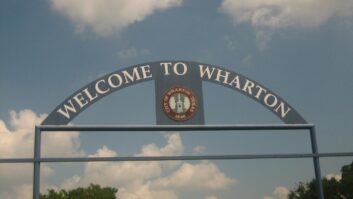We know the dates now for the two windows created just for AM stations in the United States to apply to modify or relocate FM translators.
As specified in its AM Radio Order in October, the Federal Communications Commission now has directed its Media Bureau to open the two windows. The first will start on Jan. 29, 2016, and close at 11:59 pm EDT on July 28. The second will open on July 29 and close at 5:59 pm EDT on Oct. 31.
A quick reminder about the windows themselves: The first modification window is available to Class C and D AM licensees; the second is available for AM licensees of any class.
In a public notice two days before Christmas, the FCC reiterated that these windows are designed to provide AM licensees or permittees seeking to rebroadcast on an FM translator an opportunity to acquire and relocate one authorized non-reserved band FM translator station — in FM Channels 221 to 300 — by up to 250 miles. Applications for translators currently authorized to operate in the reserved band — which includes Channels 201 to 220 — will not be accepted.
The Media Bureau clarified that only one application may be filed by or on behalf of each AM station; an AM station may be listed as the primary station on only one application filed in one (but not both) of the modification windows.
To participate in either window, applicants are required to file FCC Form 349 electronically as a minor modification application. To distinguish these unique modification window applications from typical minor mod applications, applicants must indicate in Exhibit 1 that the proposal is a “250-mile window application.”
In addition, a modification window applicant that is not currently the licensee of the AM station must state that it has entered into a rebroadcast agreement with the primary station licensee.
The Media Bureau also laid out specific guidelines and no-nos. It will dismiss as premature any application proposing a major site change before the modification windows open. It will dismiss any application filed during the first modification window proposing to rebroadcast a Class A or Class B AM station. It will dismiss any modification window application that proposes to rebroadcast an AM station that has already been listed in a prior modification window application as the primary station. And it will dismiss any modification window application that seeks to modify an FM translator station currently authorized in the reserved band.
The Media Bureau also released a series of tools to help stations locate eligible translator stations and identify rule-compliant FM translator channels. These tools — which include a translator search tool and translator channel finder — will be available on the FCC web site at www.fcc.gov/media/radio/amrevitalization. The page was not functional as of Tuesday afternoon (Dec. 29).
The translator search tool will allow an AM licensee to enter preferred relocation sites at or near its AM transmitter site. The tool will identify all translator stations authorized at locations up to 250 miles away. The second tool, the translator channel finder, identifies channels that are tentatively available for use by FM translators at any location.
The bureau also addressed a series of oft-answered questions. The complete public notice is here (PDF).
Stations with questions or concerns can contact the FCC directly.
• Legal inquiries: Parul P. Desai, (202) 418-2700
• Engineering inquiries: James Bradshaw or Robert Gates, (202) 418-2700
• CDBS Helpdesk: (202) 418-2662









